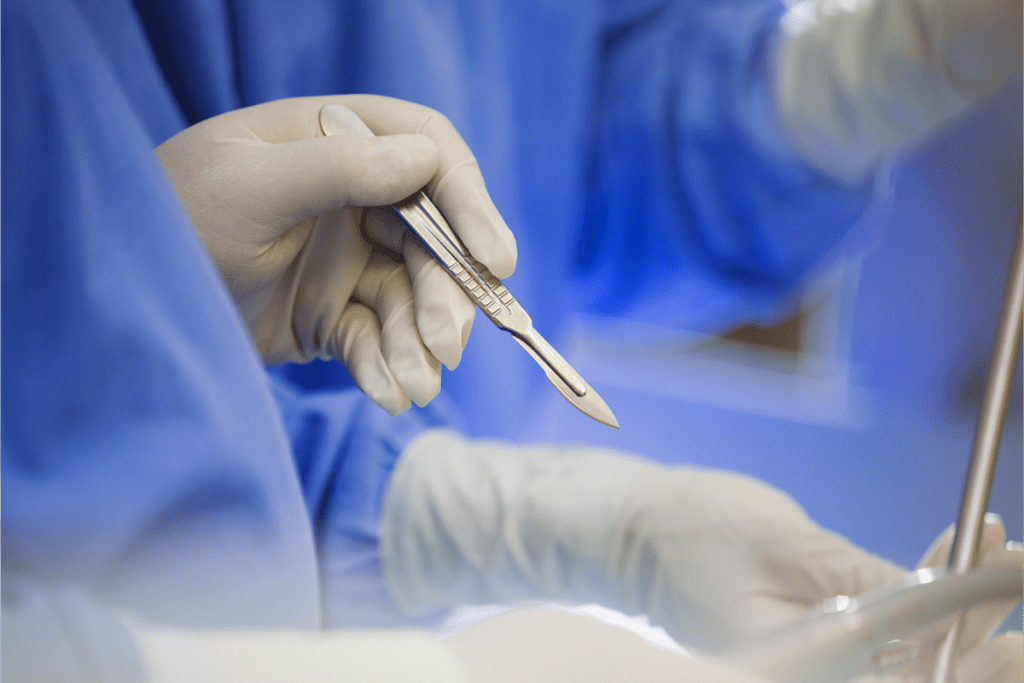Last Updated on October 31, 2025 by

Urethral stricture surgery, also known as urethroplasty, is a key treatment for urethral strictures. Knowing how long it takes and what to expect is important for patients.
The surgery usually lasts 2 to 3 hours. This depends on how complex and long the stricture is. The location of the stricture and the surgical method also play a role.
At places like LivHospital, urethral stricture surgery is done with the highest standards. This ensures the best results for patients. We will look at what affects success rates and the chance of the stricture coming back later.
The urethra is a key part of the male urinary system. It can narrow or scar, causing urethral stricture. This condition affects a man’s life, leading to painful urinary symptoms.
A urethral stricture happens when the urethra narrows or scars. This makes it hard for urine to flow. Scar tissue in the urethra often causes this, due to injury, infection, or inflammation.
The urethra is a tube that carries urine from the bladder out. In men, it’s longer and goes through the prostate gland and penis. A stricture blocks urine flow, causing symptoms.

Many things can lead to urethral strictures. Common causes include:
Knowing these causes helps spot who’s at risk. It might help prevent strictures.
Men with urethral strictures may have weak urine flow or trouble starting to urinate. They might also get urinary tract infections often. In severe cases, it can lead to urinary retention or kidney damage.
If these symptoms don’t get better with other treatments, surgery might be needed. Modern urethroplasty, a surgery to fix the urethra, works well. It has a success rate of 71% to 86% with long-term follow-up.
Choosing surgery depends on how much symptoms affect a man’s life. We’ll talk more about urethroplasty and its benefits next.
For those with recurring or complex urethral strictures, urethroplasty is the top choice. This surgery rebuilds or replaces the damaged urethra part. It’s more lasting than other treatments.
Urethroplasty fixes or rebuilds the urethra to solve stricture problems. It’s best for those with stricture that keeps coming back or has a lot of scar tissue. It’s a long-term fix for complex cases.
There are many urethroplasty types, each for a different case. The main ones are:
These surgeries aim to fix urinary issues and improve life quality for those with strictures.

Urethroplasty is the best for complex strictures, but there are other options. These include:
But these might not last as long as urethroplasty for complex cases. We talk to patients to find the best treatment for them.
The time needed for urethral stricture surgery can change a lot. This surgery, also known as urethroplasty surgery, is detailed and needs careful planning.
Many things can change how long urethral stricture surgery takes. These include how complex and where the stricture is, the surgery method, and the patient’s health. For example, a longer or more complex stricture might take more time.
Here are the main things we look at for surgery time:
The total time for urethral stricture surgery includes getting ready, the surgery, and getting better. While surgery can last from 2 to 6 hours, there’s also time before and after.
Recovery from urethroplasty surgery usually takes 2-3 weeks. During this time, a catheter is often needed. Patients should be ready for this and have support during recovery.
Knowing the total time needed for urethral stricture surgery helps patients prepare. We help our patients from the start to after they’re done, making sure they get all the support they need.
Understanding what to expect during surgery is key. Urethral stricture surgery, or urethroplasty, is a detailed process. It needs careful preparation and post-care. We’ll cover the main steps, from before surgery to when you go home.
Before surgery, tests are done to check the stricture’s severity and your health. These include uroflowmetry to measure urine flow, cystoscopy to see the urethra, and imaging like ultrasound. These help us choose the right urethral reconstruction method.
The surgery is done under general anesthesia for comfort. The method used depends on the stricture’s details. Surgeons might remove the diseased part and reconnect the urethra or use a graft. A catheter is placed after to help healing.
Right after surgery, you’re watched in the recovery room. Managing pain is a top priority. You’ll learn how to care for your catheter and handle pain at home. We also teach you to watch for signs of complications like infection or bleeding.
Most patients go home the same day or after a short stay, usually one to a few days. The stay length depends on your health and surgery complexity. We suggest starting light activities in one to two weeks, then gradually increase as you heal.
It’s important for patients to understand urethral stricture surgery well. Urethroplasty, the surgery for urethral stricture, has a high success rate. Most patients see a big improvement in their symptoms.
Knowing about the surgery’s duration and recovery time helps patients choose the best treatment. We stress the need for pre-surgery checks and post-op care for a smooth recovery.
Urethroplasty greatly reduces symptoms of urethral stricture. We aim to provide top-notch healthcare and support to our international patients. By knowing the procedure’s benefits, patients can make the best choice for their health and well-being.
Urethral stricture surgery, also known as urethroplasty, fixes a narrowing or blockage in the urethra. It aims to restore normal urine flow and ease symptoms of urethral strictures.
Urethroplasty surgery time varies. It depends on the stricture’s length, location, and case complexity. It can last from a few hours to several hours.
Urethral strictures can come from trauma, infection, or inflammation. They can also happen after certain medical procedures. Knowing the cause helps us choose the right treatment.
Minor urethral damage might heal by itself. But, serious damage or strictures need medical help. It’s best to get professional advice for treatment.
Modern urethroplasty is very effective, giving many patients a lasting solution. Success depends on the stricture’s complexity and the patient’s health.
Yes, treatments like dilation and urethrotomy exist. But, they might not work for long, mainly for complex or recurring strictures. We discuss the best options with you.
Recovery after urethroplasty involves a hospital stay and follow-up care. The specifics depend on your case and the procedure type.
Like any surgery, urethroplasty has risks and complications. We take precautions and provide care for any issues that might come up.
Preparing for surgery includes evaluations and tests to check if you’re a good candidate. We guide you through the steps and give instructions for a successful surgery.
Urethroplasty fixes the urethra, while ureteroplasty repairs the ureter. We do these surgeries for specific issues in their respective areas.
Subscribe to our e-newsletter to stay informed about the latest innovations in the world of health and exclusive offers!